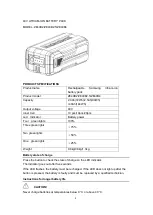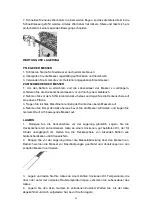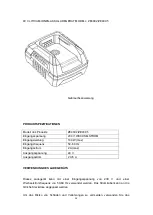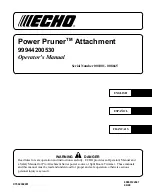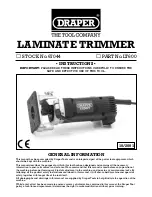
10
Do not charge the batteries in high humidity or temperature.
Do not cover batteries and/or the battery charger when charging.
Battery and charger will heat up when charging - this is normal.
Before a battery is recharged, it should be fully drained first. Let the charging process run
to the end.
NOTE
Follow all instructions when charging the battery.
Shorter usage after recharging indicates the battery is worn and must be replaced by a
qualified technician.
When the batteries are not used for a while, store them partially charged in a cool
location(10
–25 C).
Transport
The equivalent lithium content of the batteries included in the product package is below
the appropriate limit values. Therefore, the battery as an individual component as well as
the power tool and its product package are not subject to national or international
dangerous goods regulations.
If several machines with lithium-ion batteries are transported, these regulations may
become relevant and special safety measures may be required (e.g. for the packaging).
In this case find out about the currently valid regulations for the country of use.
CAUTION!
Do not post batteries which have a damaged casing.
Disposal information
The crossed out wheelie bin symbol on the product means that under the
WEEE regulations, all consumer and household electrical and electronic products should
not be mixed with general household waste as it may contain environmentally hazardous
substances. For environmentally responsible recovery, recycling and treatment of the
product, contact your local authority for details of your nearest designated collection point
where it will be accepted free of charge.
WARNING!
Do not throw accumulators/batteries into household waste, fire or water.
Do not open batteries.
Summary of Contents for 845-742V90
Page 1: ...0 ...










